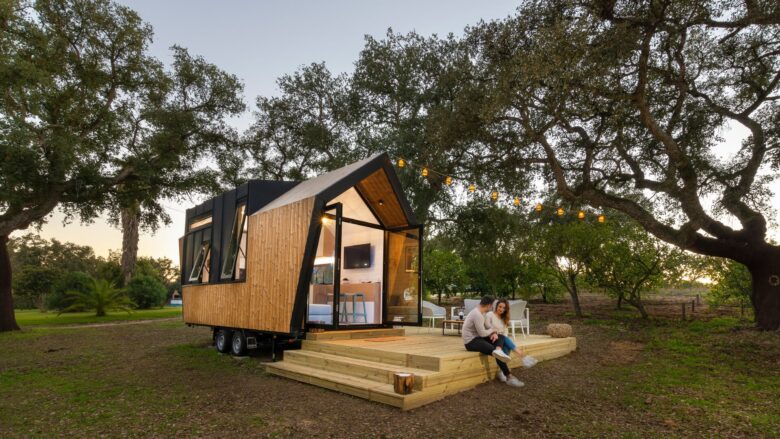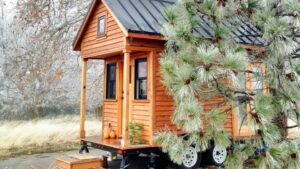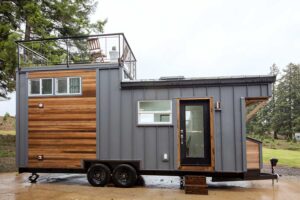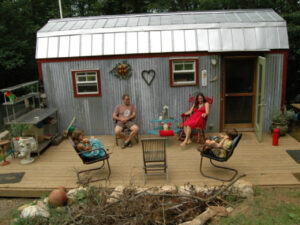In many areas of our lives, including housing, the global push for sustainability has given rise to new ways of doing things. One trend that stands out and is accelerating is the rise of environmentally friendly small houses. Not only do these tiny homes offer a unique lifestyle, but they also make a great contribution to the environment. This article takes an in-depth look at the idea of sustainable tiny homes, including their benefits, how to build them, and the good things they can do for the environment.
1. The Core of Small Greenhouses
Live Small and Simple
Sustainable micro homes follow the minimalist concept and encourage residents to live with fewer possessions and have a smaller impact on the environment. This lifestyle not only reduces material consumption but also encourages a more thoughtful and conscious lifestyle.
Use Less Energy
Energy efficiency is one of the most important parts of small homes that are good for the environment. The homes are built with new insulation materials, energy-efficient appliances, and sustainable energy sources such as solar panels. Small homes help make the future greener and more sustainable by using less energy.
2. Benefits of Eco-friendly Tiny Houses
Less Harmful to the Environment
Building a traditional house often requires a lot of materials and creates a lot of waste. Sustainable tiny homes, on the other hand, use fewer building materials and therefore have a smaller impact on the environment. In addition, their small size makes it easier to use land efficiently and protect natural habitats.
Affordability and Freedom of Money
Sustainable tiny houses are generally cheaper than larger houses. When construction costs are lower, energy costs are lower, and maintenance is easier, residents can achieve financial freedom and spend their money on experiences instead of buying things. This change in the economy has led to better, more sustainable ways of living.
Able to Move and Bend
Many eco-friendly tiny houses are built on wheels, making them easy to move. People can lead a nomadic lifestyle because they can move around easily. This brings them closer to nature and reduces the need for extensive new infrastructure.
3. Design Principles of Sustainable Tiny Homes
Space Improvements
When designing a sustainable tiny house, it is important to make the most of the space. Designers came up with creative solutions such as furniture that can be used for multiple purposes, sleeping areas with voids, and storage spaces built into the walls and floors. These design principles make things as useful as possible while keeping them small.
Use non-dead Materials
The materials used to build small houses are very important for their longevity. To minimize environmental impact, designers chose materials that are environmentally friendly, recyclable, and locally produced. The structure is also more environmentally friendly when using renewable materials such as bamboo and reclaimed wood.
Increase Green Technology
One thing that makes a tiny house sustainable is the use of green technology. Solar panels, rainwater harvesting systems, and composting toilets are all common features that can help people become self-sufficient by reducing their dependence on traditional utilities. These technologies help create living spaces that are greener and use less energy.
4. Overcome Past Problems and Misunderstandings
Regulatory Issues
Despite the many benefits of sustainable tiny homes, permits can be difficult to obtain in many places. Zoning laws, building codes, and square footage restrictions can make it harder for small homes to catch on. To help policymakers and communities understand and accept each other, advocacy and education are important.
Society Views Things
Another problem is that people think small houses are useless or uncomfortable. It is important to dispel misconceptions about sustainable small living by showing success stories and their benefits. This will help change people’s minds and attract more people to join.
Conclusion
Sustainable tiny homes can be a great way to tackle the environmental and social issues of traditional homes. These tiny houses show how to live a more sustainable and fulfilling life by promoting minimalism, energy efficiency, and new approaches to design. To make the most of sustainable tiny homes and unleash a green revolution in housing, we need to overcome regulatory challenges and change the way people think about them. As people become more environmentally conscious, using sustainable tiny homes could become a key factor in creating a better, more peaceful future.
FAQs
1. What makes a tiny house sustainable?
Sustainable tiny homes are small homes that have as little impact on the environment as possible. To make their lifestyle more sustainable and purposeful, they follow the philosophy of minimalism, energy saving, and the use of environmentally friendly materials.
2. How do eco-friendly tiny houses help protect the environment?
Small eco-friendly houses help protect the environment by using fewer building materials, using less energy through smart design, and often using renewable energy sources such as solar panels. Their small size also allows for better land use and a lower overall impact on the environment.
3. What problems do people face when trying to live in sustainable tiny homes?
Overcoming this problem requires efforts to change regulatory frameworks and social perceptions. It is important to show examples of effective sustainable living, educate people about its benefits, and help them better understand the environmental and economic benefits.
4. How are eco-friendly tiny houses designed to make the most of space?
The whole point of building a sustainable tiny home is to make the most of the space. This includes using multi-use furniture, sleeping areas with voids, and creative storage ideas built into the floors and walls. The goal is to make it as useful as possible while keeping the size small.
5. What materials are commonly used to build environmentally friendly huts?
Sustainable tiny homes use recycled, eco-friendly, and locally sourced materials wherever possible. To make buildings more environmentally friendly, designers often use materials that can grow again, such as bamboo and old wood.
6. How to save energy in an environmentally friendly small apartment?
Sustainable tiny homes use a variety of energy-saving methods, such as new insulation materials, appliances that use less energy, and renewable energy sources such as solar panels. These features help make the place where you live greener and more sustainable.



